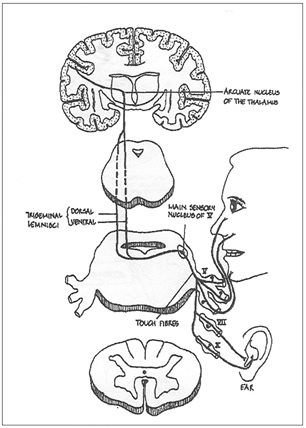| Characteristics of sensory pathways | |
• Presence of distinct set of receptors, distributed over the body. • A minimum of 3 neurons between receptor and cerebral cortex • Obligatory relay in the thalamus • Feedback and feed-forward modulating mechanisms along the way especially at relay stations. • Collateral projections to the reticular formation in the brain stem. • Topological maps at the various relay stations and in the cerebral cortex. • Primary and secondary sensory areas. • Association sensory areas connect with the limbic system via sensory limbic connections
|
|
|
PATHWAYS FOR PAIN AND TEMPERATURE |
|
| |
|
| Spinal Sensations | |
|
|
|
| Note: In the upper part of the medulla oblongata, the lateral and ventral spinothalamic tracts and the spinotectal tracts are closely associated at this level and throughout the reminder of the brain stem, together, and they constitute spinal lemniscus . Spinotectal tract terminates in the superior colliculus while the others go to the reticular formation . | |
| Cranial Sensations | |
Note: Some fibres from the trigeminal tract are believed to ascend uncrossed |
 |
|
|
|